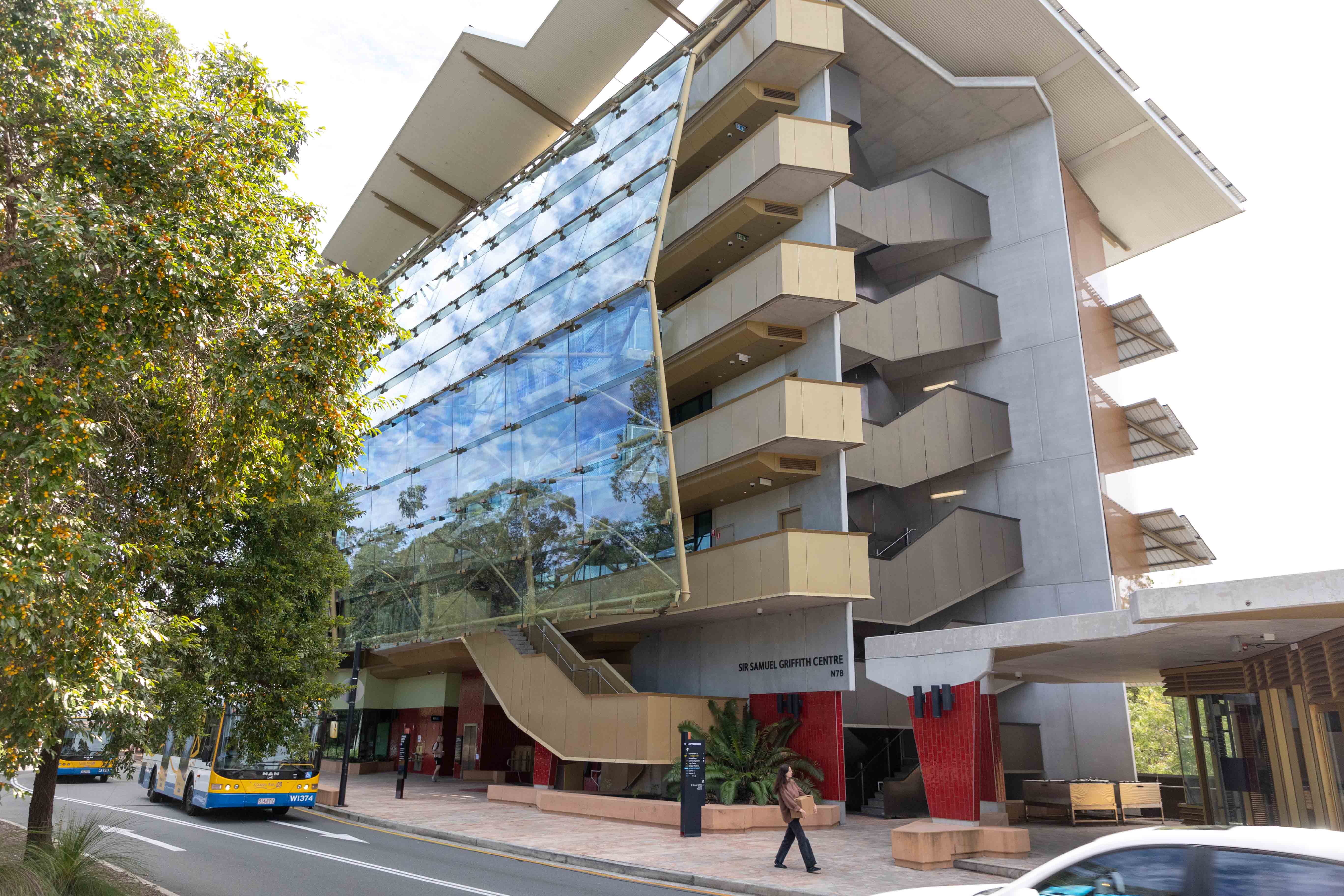Australian Solar to Hydrogen Building and Offshore Hydrogen Microgrids

The Sir Samuel Griffith Centre on the Griffith University’s Nathan campus in Brisbane, Australia uses solar power and hydrogen to power the entire building.
April 24, 2023
While visiting her home country of Australia, ACEP’s Chief Storyteller Amanda Byrd toured a solar- to hydrogen-powered building on the Griffith University’s Nathan campus in Brisbane, Queensland.
As Alaska looks toward developing hydrogen energy and storage projects, the visit helped to create potential research partnerships in onshore and offshore hydrogen microgrids.
The Sir Samuel Griffith Centre was purpose designed and built as a demonstration solar energy to hydrogen powered facility. The building, while grid connected to ensure it can provide power if the microgrid fails, hosts hundreds of students for lectures daily and runs on solar power that is used to generate hydrogen for additional power and energy storage.
The building’s 1,164 solar photovoltaic panels generate the base power for the building, and a battery bank made of 1,024 lithium-ion batteries stores power to be used at night and in inclement weather. When a battery bank is full, the solar array, which is oversized for the building’s needs, is used to generate hydrogen for long-term energy storage and additional power. The hydrogen is stored in stable, solid form as metal hydride. Heating the fuel cells releases energy and hydrogen gas, which can provide full power to the building for around three days.
Byrd toured the facility with Professor Evan Gray, a physicist who works with the Queensland Micro- and Nanotechnology Centre at Griffith University and is the program leader for offshore renewable energy systems for Australia’s Blue Economy Collaborate Research Center.
Australia and Alaska have many similarities, especially when it comes to islanded power systems and microgrids. One interesting similarity is the need for space heating— or in Australia’s case, cooling. The solar to hydrogen facility’s largest load is in fact a chiller that provides 200,000 gallons of cool water for air conditioning.
As Alaska looks more into hydrogen energy and storage, it may look to Australia to learn more about the application. Currently, Australia has around 120 hydrogen-related projects, including 10 operating facilities, 12 under construction, 87 in development planning, and others in assessment studies.
For more information about hydrogen energy in Alaska, please join the Alaska Hydrogen Working Group.


